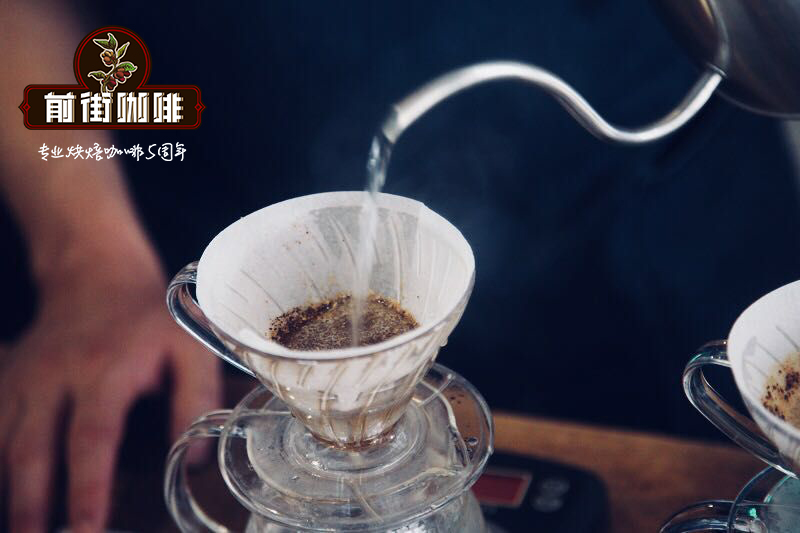Peruvian Organic Coffee Sun and Coffee Cooperative what are the flavor and taste characteristics of washed coffee beans? Such as

Professional coffee knowledge exchange more coffee bean information please follow the coffee workshop (Wechat official account cafe_style)
Peruvian Organic Coffee Sun and Coffee Cooperative what are the flavor and taste characteristics of washed coffee beans? How to taste Peruvian organic coffee?
Product name: Peru Cajamarca FTO SOL Y CAFE
Varieties: Typica, Caturra, Pache, Mondo Novo, Bourbon, Catuai, and Catimor
Production area: Cajamarca, Peru
Villa: Sol Y Cafe
Sea pull: 900-2000m
Management: washing
Certification: organic Fair Trade
Wind flavor: orange, lime, grapefruit and honey green tea
70% of Peru's coffee is produced in the north of the border, mainly Arabica, and most of it is organic coffee; coffee exports account for a high proportion of Peru's agricultural production. The coffee varieties grown in Peru are mainly Bourbon, Typica and Caturra. More than 1/3 of Peru's population depends on agriculture for a living, and most of them are self-employed small farmers. Because of the narrow and long land, the large gap between the height of land, the long distance between cities, and the high cost of transportation, the groups organized by small farmers are particularly important.
Since 2005, Fairtrade labelling International has been assisting Peruvian farmers to enter the fair trade system, and Peru is now one of the largest exporters of organic and fair trade coffee in the world.
Fair trade covers many industries and demands the whole industrial chain, from the producers at the source, the traders and road dealers who handle the goods in the middle, to the consumers at the end, the actions of every link should be in line with the principle of fairness and impartiality. therefore, it is not easy to obtain fair trade certification, such as allowing farmers to have a reasonable income, farmers' farming should be environmentally friendly, and traders should let farmers have a reasonable income. Can help improve their lives. Wait, you need to meet a lot of specifications in order to be certified. If they can have a better and better quality of life, farmers will pay more attention to the sustainability of the environment and industry.
In the past, when farmers in equatorial countries in South America wanted to expand their acreage to increase their income, they cut down the rainforest directly without thinking, causing the Amazon's primitive rainforest to disappear 750000 square kilometers since the 1970s. For the sake of sustainable forest, the current planting will no longer cut down the original forest, but will instead plant coffee trees in the shade. At present, more than half of the coffee in Peru is shaded, which can not only sustain the rainforest, but also improve the quality of coffee.
Starting from Europe and the United States, the consumer market's concept of environmental protection awareness, social justice, and personal health has become popular. at present, there is a huge demand in the world organic market, and Peruvian small farmers who seriously manage all kinds of organic agricultural products. the sky is getting wider and wider. The Peruvian government understands that organic agriculture is self-serving, and plans supporting measures in addition to encouraging small farmers to form associations or cooperatives. Peru is now the fifth largest exporter of organic agriculture.
Cajamarca is a coffee-producing region in northern Peru that covers the northern tip of the Andes. Due to the passage of the equator and suitable soil, the coffee quality in the area is quite good.
Peruvian coffee and cocoa growers are mostly small farmers with only one to three hectares of land, many of whom live in remote mountainous areas, and transportation alone takes a lot of time. Small coffee farmers in Kahakama area usually have good technical and organizational support.
Tasting Peruvian organic coffee is really a knowledge and requires a lot of experience.
The flavor and taste of coffee can be divided into five types: sour, sweet, bitter, concentration and aroma.
At first, try to think about which of these five tastes are the most obvious in your facial senses.
After looking at their usual coffee, where is the good taste? Where do you feel inadequate?
The most important thing is to try to look at coffee from different places and businesses, so as to enrich your taste experience.
When you have comparative experience as a benchmark, you can better understand the personality of each kind of coffee bean.
My own experience is to drink or smell something familiar.
But I can't find anything corresponding to this smell in my mind.
This is why there are not enough kinds of taste and cards.
So at first, let's see what it smells like, to think about the smell of these things.
Like the nutty flavor, jam fruit flavor, wild berry flavor, wild ginger flower, red wine rhyme, chocolate rhyme
It is important to slowly develop your own taste discrimination and increase your own taste database
After drinking it over and over again, you should be able to determine your favorite flavor.
Let's first introduce the simple expression of taste.
Fragrance
The aroma of coffee is composed of acid, alcohol, acetaldehyde, ketone, ester, sulfur compound, phenol, nitrogen compound and nearly hundreds of volatile components.
The lipid ingredients will blend with the bitterness of the coffee to form a smooth taste. So the disappearance of the fragrance means that the quality is getting worse.
Common aroma expressions: flower flavor (Floral), nut flavor (Nutty), fruit flavor (Fruity)
Bitter taste
The basic taste of coffee is the strength and texture of bitterness.
Raw beans contain only a tiny amount of bitterness, which is caused by the caramelization and carbonization of sugar, starch and fiber caused by baking.
Generally speaking, the bitter taste of coffee with strong sour taste is weaker, while that of coffee with bitter taste as the main body is easy to be insufficient.
Sour taste
In terms of the elevation of the variety, coffee grown in the highland is more sour than that in the lowland.
Generally, the beans with shallow baking are rich in sour taste, and those with deep baking degree are lack of sour taste.
Just harvested beans, good quality, high moisture content, if the appropriate heat to produce a moderate sour taste, will make the coffee taste better, make people feel more deep.
Acid (Acidity): wild berry (Berry-like), peach (Peach-like)
Concentration
The texture of the coffee is as clear as water or as thick as pulp, and the saturation of the whole mouth after sipping
Body: Thin, Mellow, Full-bodied
sugariness
During the baking process, some carbohydrates such as sucrose and glucose are caramelized and the rest are sweet.
Usually you can smell sweetness or sweetness at the bottom of the cup or the aroma of coffee.
Flavor: vanilla (Herbal), vanilla (Vanilla-like), caramel sweetness (Caramel-like)
Aftertaste: sweet (Sweetness), long (Long-lasting), smoked (Smoky)
Sense of hierarchy
I believe that at the beginning of drinking a single cup of coffee, you will hear the term "hierarchy".
The so-called sense of hierarchy is the process of the aftertaste of coffee from entering into the mouth to drinking it.
The hierarchical flavor of coffee will emerge one by one, so that you can taste it in order, instead of exploding all the flavors at once, so that you can't tell the difference.
Important Notice :
前街咖啡 FrontStreet Coffee has moved to new addredd:
FrontStreet Coffee Address: 315,Donghua East Road,GuangZhou
Tel:020 38364473
- Prev

What is the flavor and taste of Peruvian organic coffee Haya Coffee Peruvian Antina? Peruvian organic coffee
Professional coffee knowledge exchange more coffee bean information please follow the coffee workshop (Wechat official account cafe_style) Peruvian organic coffee Haya coffee Peruvian taste and taste? Introduction to Peruvian organic coffee? Cajamarca is a large region of northern Peru, bordering Ecuador to the north, between the Amazon Plain and the Andes. Located on both sides of the Cajamarca River
- Next

Introduction to Peruvian organic coffee? What are the flavor and taste characteristics of Peruvian organic coffee Tunki?
Professional coffee knowledge exchange more coffee bean information please follow the coffee workshop (Wechat official account cafe_style) Peruvian organic coffee introduction? What are the flavor and taste characteristics of Peruvian organic coffee Tunki? Peru is the world's largest producer and exporter of organic coffee and the fourth largest exporter of coffee in the world. Peruvian coffee has always been a premium boutique coffee (Prem
Related
- Detailed explanation of Jadeite planting Land in Panamanian Jadeite Manor introduction to the grading system of Jadeite competitive bidding, Red bid, Green bid and Rose Summer
- Story of Coffee planting in Brenka region of Costa Rica Stonehenge Manor anaerobic heavy honey treatment of flavor mouth
- What's on the barrel of Blue Mountain Coffee beans?
- Can American coffee also pull flowers? How to use hot American style to pull out a good-looking pattern?
- Can you make a cold extract with coffee beans? What is the right proportion for cold-extracted coffee formula?
- Indonesian PWN Gold Mandrine Coffee Origin Features Flavor How to Chong? Mandolin coffee is American.
- A brief introduction to the flavor characteristics of Brazilian yellow bourbon coffee beans
- What is the effect of different water quality on the flavor of cold-extracted coffee? What kind of water is best for brewing coffee?
- Why do you think of Rose Summer whenever you mention Panamanian coffee?
- Introduction to the characteristics of authentic blue mountain coffee bean producing areas? What is the CIB Coffee Authority in Jamaica?

